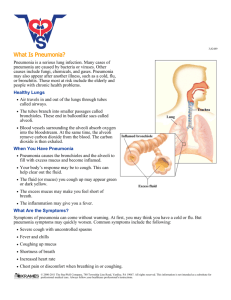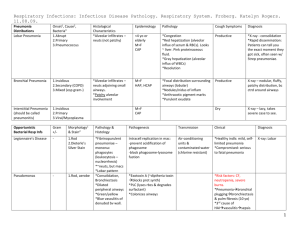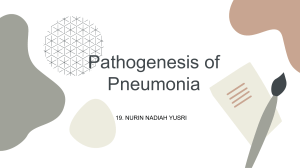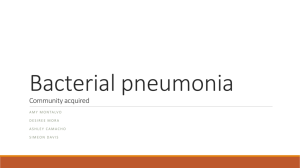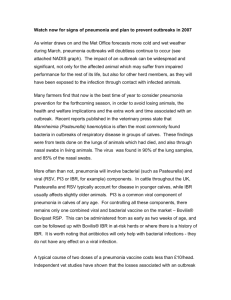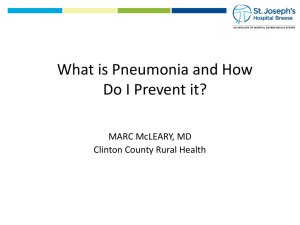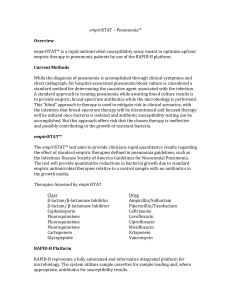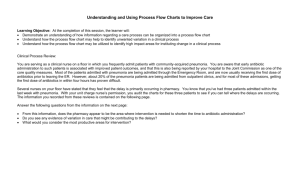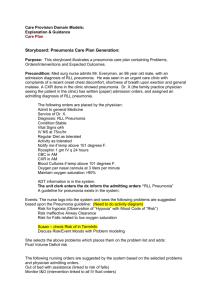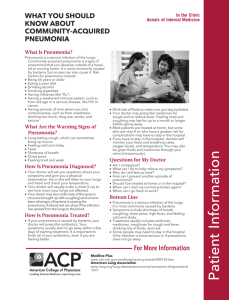Lung Pathology – Pneumonia MCQ`s
advertisement
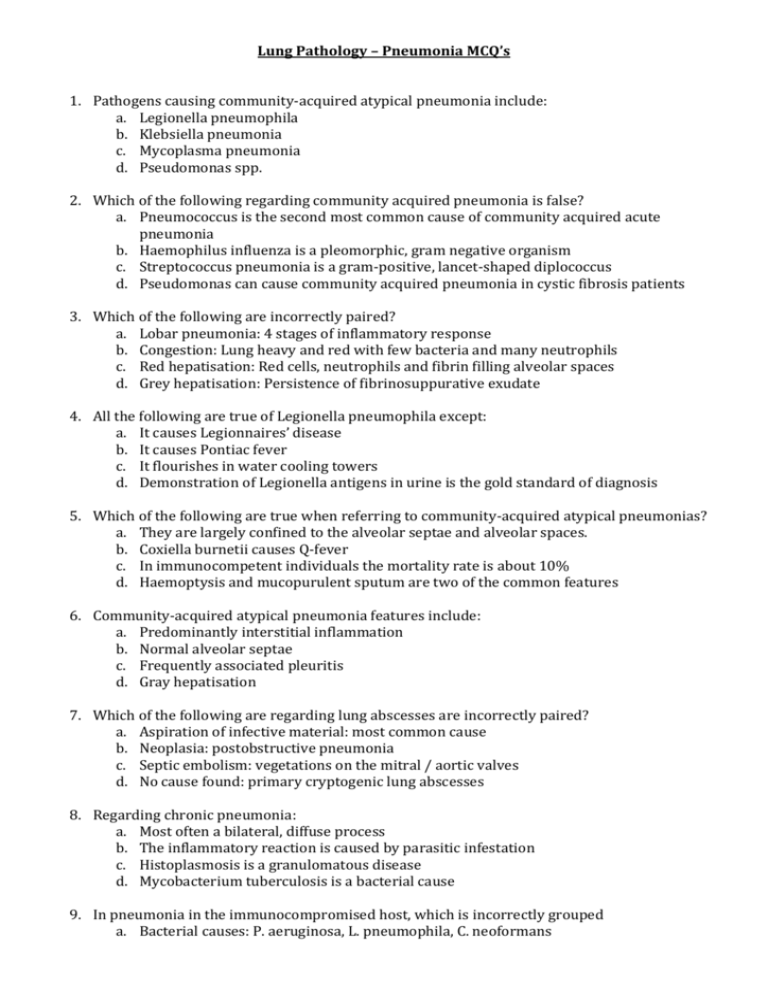
Lung Pathology – Pneumonia MCQ’s 1. Pathogens causing community-acquired atypical pneumonia include: a. Legionella pneumophila b. Klebsiella pneumonia c. Mycoplasma pneumonia d. Pseudomonas spp. 2. Which of the following regarding community acquired pneumonia is false? a. Pneumococcus is the second most common cause of community acquired acute pneumonia b. Haemophilus influenza is a pleomorphic, gram negative organism c. Streptococcus pneumonia is a gram-positive, lancet-shaped diplococcus d. Pseudomonas can cause community acquired pneumonia in cystic fibrosis patients 3. Which of the following are incorrectly paired? a. Lobar pneumonia: 4 stages of inflammatory response b. Congestion: Lung heavy and red with few bacteria and many neutrophils c. Red hepatisation: Red cells, neutrophils and fibrin filling alveolar spaces d. Grey hepatisation: Persistence of fibrinosuppurative exudate 4. All the following are true of Legionella pneumophila except: a. It causes Legionnaires’ disease b. It causes Pontiac fever c. It flourishes in water cooling towers d. Demonstration of Legionella antigens in urine is the gold standard of diagnosis 5. Which of the following are true when referring to community-acquired atypical pneumonias? a. They are largely confined to the alveolar septae and alveolar spaces. b. Coxiella burnetii causes Q-fever c. In immunocompetent individuals the mortality rate is about 10% d. Haemoptysis and mucopurulent sputum are two of the common features 6. Community-acquired atypical pneumonia features include: a. Predominantly interstitial inflammation b. Normal alveolar septae c. Frequently associated pleuritis d. Gray hepatisation 7. Which of the following are regarding lung abscesses are incorrectly paired? a. Aspiration of infective material: most common cause b. Neoplasia: postobstructive pneumonia c. Septic embolism: vegetations on the mitral / aortic valves d. No cause found: primary cryptogenic lung abscesses 8. Regarding chronic pneumonia: a. Most often a bilateral, diffuse process b. The inflammatory reaction is caused by parasitic infestation c. Histoplasmosis is a granulomatous disease d. Mycobacterium tuberculosis is a bacterial cause 9. In pneumonia in the immunocompromised host, which is incorrectly grouped a. Bacterial causes: P. aeruginosa, L. pneumophila, C. neoformans b. Viral causes: CMV, Herpes c. Fungal causes: P. jiroveci, aspergillus, candida d. Diffuse infiltrate: CMV, P. jiroveci, drug reaction 10. Which of the following do not commonly cause a focal infiltrate in immunocompromised hosts? a. Gram-negative rods b. S. aureus c. Candida d. CMV Answers: 1. c (pg 711) 2. a (pg 711) 3. b (pg 712) Many bacteria, few neutrophils 4. d (pg 712) Culture is the gold standard (also PCR and sputum antigens for testing) 5. b (pg 714) 6. a (pg 714) 7. c (pg 717) 8. b(pg 717) ??? C and D seem like the correct answers… 9. a (pg 719) 10. d (pg 720)


